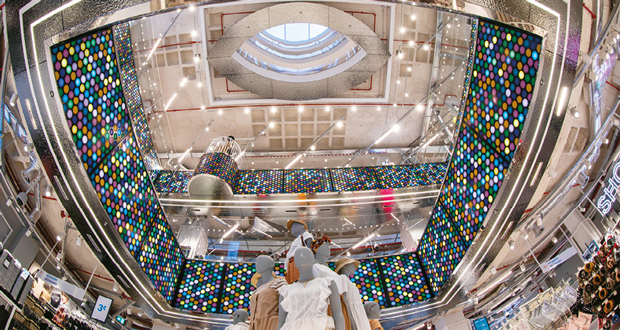Jonathan Hitch, Estimator Purchasing and Sustainability Lead for Widd Signs explains the many reasons why FMs need to ensure signage suppliers are operating in as green a way as possible
No matter what set of figures you examine or direction you look in, the world has a massive waste problem. According to data from the World Bank, more than two billion tonnes of municipal solid waste is currently generated annually, and by 2050 that is projected to reach 3.4 billion tonnes in line with a doubling global population. Worryingly, at least one in three of those tonnes are not managed in a way that is environmentally safe.
Looking at our industry, signage waste is not an insignificant problem. Since the 1950s, annual production of plastic has increased 200-fold, with 381 million tonnes produced in 2015 alone.
HOW CAN SIGNAGE BECOME MORE SUSTAINABLE?
Fortunately, there are a variety of actions that we as signage manufacturers can take to play our part in tackling the wastage problem. In doing so, we can provide responsible solutions for facilities managers to incorporate into their buildings.
The most obvious place to start, and where my responsibility at Widd centres around, is the supply chain. In particular, I am talking about signs made with responsibly-sourced materials which broadly fall into three categories – soft substrates, hard substrates and inks.
SOFT SUBSTRATES: In the area of soft substrates, a major focus has been finding alternatives to PVC, which as well as being one of the most environmentally damaging plastics, is also becoming prohibitively expensive.
There are many examples I can share. For office interiors, a credible alternative to paint or PVC vinyl are greyback canvas wall coverings made from 100 per cent recycled polyester, which we also use to make banners which carry a higher tensile strength to weight ratio than PVC versions. Moreover, they are recyclable at the end of their life. For retail giant Primark, we recently supplied its Sheffield store with a greyback canvas using products made from recycled bottles.
HARD SUBSTRATES: For hard substrates, once again, this means doing away with PVC and exploring alternatives which can feed into the circular economy and provide cost benefits at the same time.
As an example, manufacturers can look at adopting various types of acrylics which can contain anywhere between 70 per cent and 90 per cent recycled materials. Meanwhile, PVC foams can be replaced by polypropylene bubble board which contains up to 50 per cent recycled content, meaning it can go into general council recycling and return schemes. Polypropylene is generally becoming more popular because of this, as well as the fact it becomes stronger the more times it is recycled and repurposed.
Removing plastics altogether is another option signage producers and users should explore. Here, we’re talking about fibre boards, card-based display boards, and paper products which for facilities management represents a good option for short-term signage that is used over a six-to-12-month lifespan. For signs requiring light, LEDs should be used instead of halogen bulbs.
ENVIRONMENTAL INKS: A sustainable sign will also be made with environmentally responsible inks. Water-based and latex inks are more sustainable solutions than UV and solvent varieties, and manufacturers should also look at joining recycling schemes for which tax credits are available.
BEYOND RAW MATERIALS
The way in which signs are made and distributed is another important consideration that prospective buyers should be making.
Indeed, there are many ways to cut carbon footprints through making on-site efficiencies. For example, we have installed solar panels at our Leeds HQ and have also recently invested in energy efficient upgrades to our St Helens manufacturing site as well as purchasing more sustainable equipment such as our Zund cutting machine.
We’ve also invested in electric and hybrid vehicle fleets as another way to boost sustainability credentials and become a more responsible supplier to facilities managers and other clients.
These are all important factors that contribute to sustainable sign-making. With companies and brands under the sustainability microscope like never before, organisations need to take every step possible to demonstrate to their customers and employees that they are taking environmental responsibility seriously. For facilities managers, that means scrutinising every last detail about how their buildings are comprised, which includes signage – how signs are made, what goes into them and how well they’re maintained. Properly preserving a buildings signage will ensure a longer lifespan, saving waste in having to replace signs more frequently.
It is not just sustainability benefits that can be gained through this approach. As we have seen with the rising cost of raw materials, alternative materials to PVC and harmful plastics are becoming increasingly cost-effective and providing equal or even superior performance.
Indeed, so often we see sustainable strategies framed in a context of cost versus responsibility. When it comes to signage, it is clear that sustainable solutions are also becoming the most affordable and high performing.





